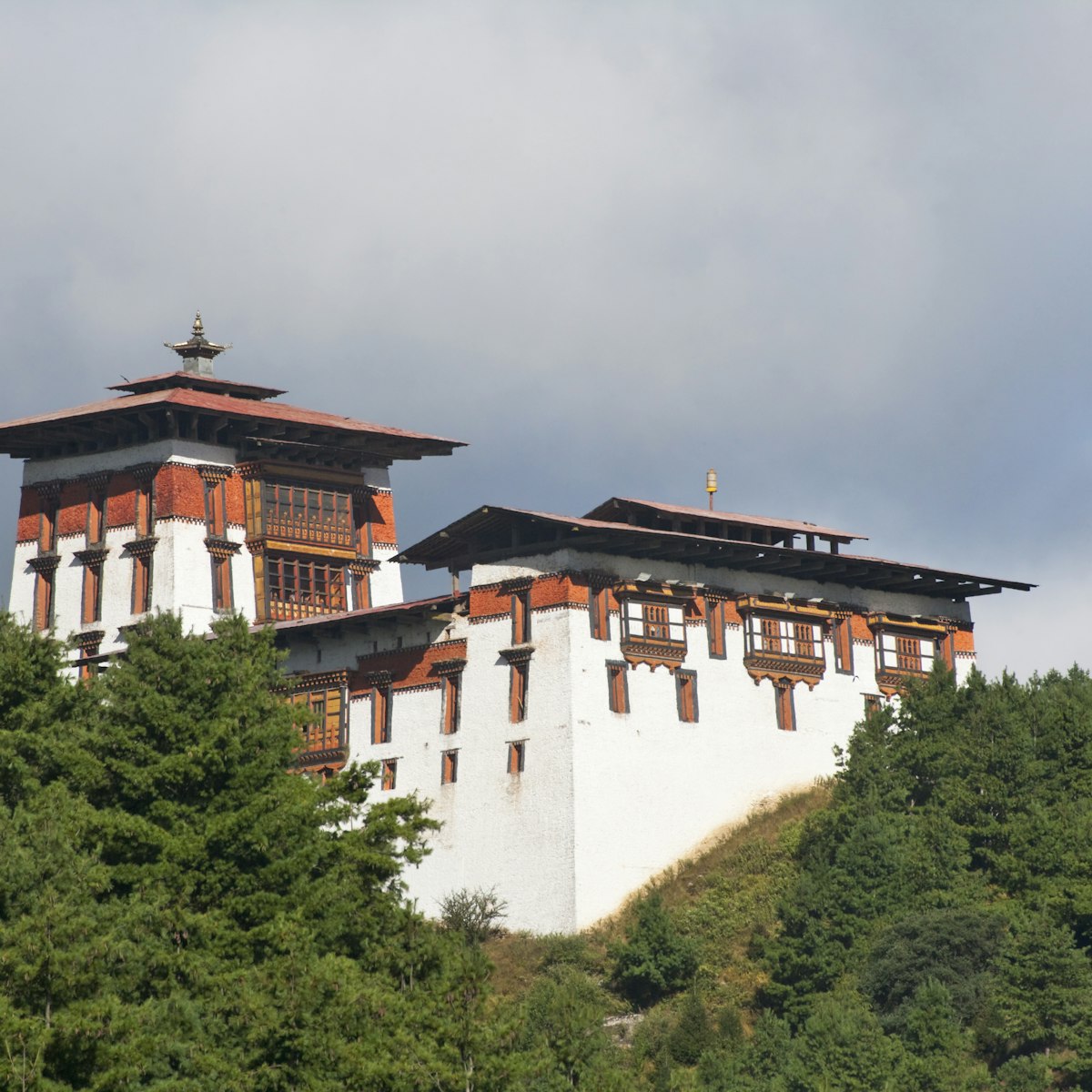Up a short side road about 1.5km past Sey Lhakhang, this fabulous temple is believed to have been built in 659 by the Tibetan king Songtsen Gampo, on the same day as Kyichu Lhakhang in Paro, in order to subdue a Tibetan demoness (the temple is said to pin her left knee). The temple was visited by Guru Rinpoche and was renovated by the Sindhu Raja after the Guru restored his life force. It's the one place in the valley that feels truly ancient.
Inside the main Jampey (Jampa) Lhakhang are three stone steps representing three ages. The first signifies the past, the age of the historical Buddha, Sakyamuni. This step has descended into the ground and is covered with a wooden plank. The next age is the present, and its step is level with the floor. The top step represents a new age. It is believed that when the step representing the present age sinks to ground level, the gods will become like humans and the world as it is now will end.
The central figure in the ancient inner sanctum is Jampa, the Buddha of the future, with his feet on an elephant. This is the oldest part of the oldest chapel in Bhutan. The entry to the chapel is protected by an iron chain mail that was made by Pema Lingpa. Look up into the alcove above the entry to see a statue of Guru Rinpoche. He sat in this alcove and meditated, leaving behind a footprint. It is said that under the lhakhang there is a lake with several terma – sacred texts and artefacts hidden by Guru Rinpoche.
The inner kora (circumambulation) path around the chapel is lined with ancient murals depicting 1000 Buddhas. There are more lovely murals in the atrium. On the right side of the wooden wall divider is an image of Kim-lha, the Goddess of the Home.
On the northern side of the courtyard is the Kalachakra Temple (Dukhor Lhakhang), added by Ugyen Wangchuck when he was penlop. The animal-headed deities on the walls are the demons that confront the dead during the 49 days of bardo (the state between death and rebirth). Chimi Dorji, the administrator of Jakar Dzong, added the Guru Lhakhang on the south side of the dochey (courtyard), which features statues of Guru Rinpoche, Tsepame and Chenresig. Generations of prostrators have worn the wooden boards smooth on either side of the courtyard entryway.
Behind the main temple are two large stone chortens; one is in memory of the second king's younger brother, the other in memory of Lama Pentsen Khenpo, spiritual adviser to the first and second Bhutanese kings. The four corners of the complex are anchored by four more chortens, coloured yellow, red, white and blue.
The pile of mani stones (carved with the Buddhist mantra om mani peme hum) in the car park in front of the goemba is called a thos and represents the Guardians of the Four Directions.
Each October one of the most spectacular festivals in Bhutan, the Jampey Lhakhang Drup, is staged here. The festival ground and VIP viewing platform is to the left (south) of the chapel. On one evening, after the lama dances, the monastery hosts a mewang (fire blessing connected to fertility rites), when pilgrims jump through a burning archway. Another late-night rite is the naked tercham (treasure dance), normally performed at midnight.





